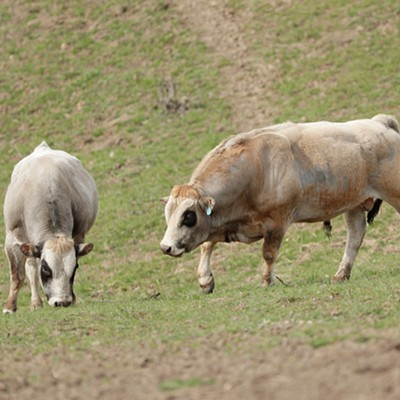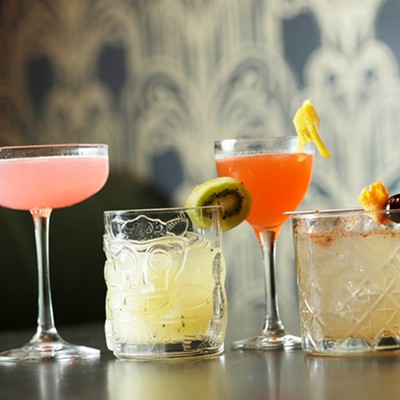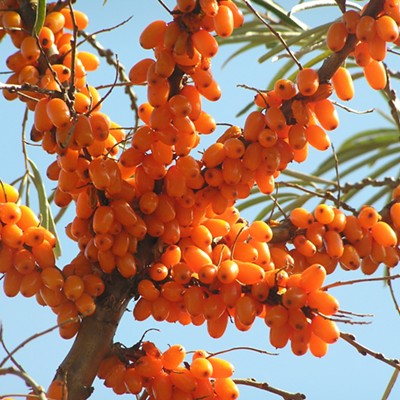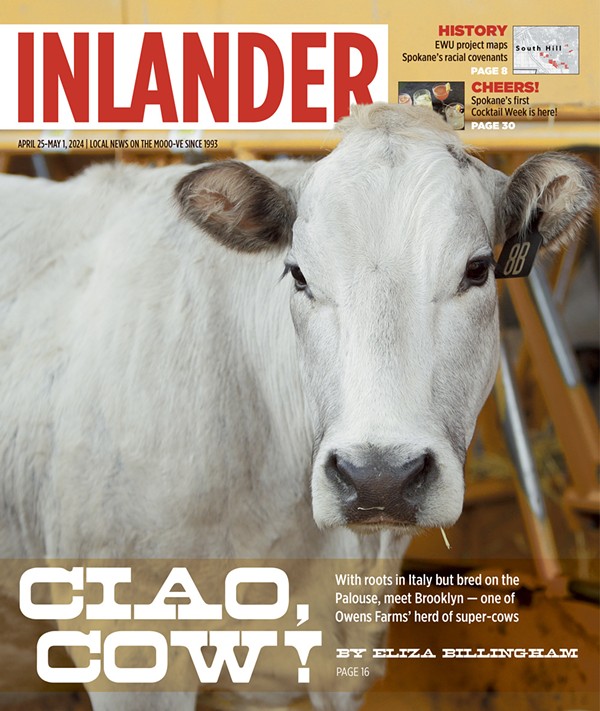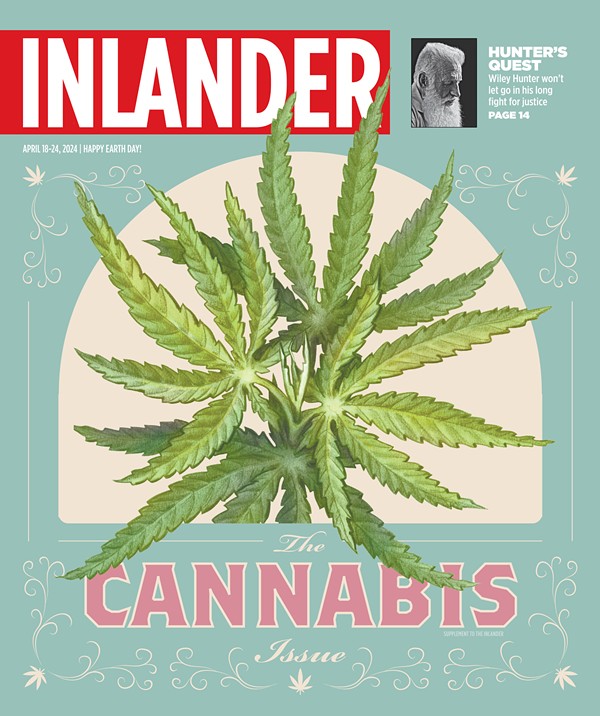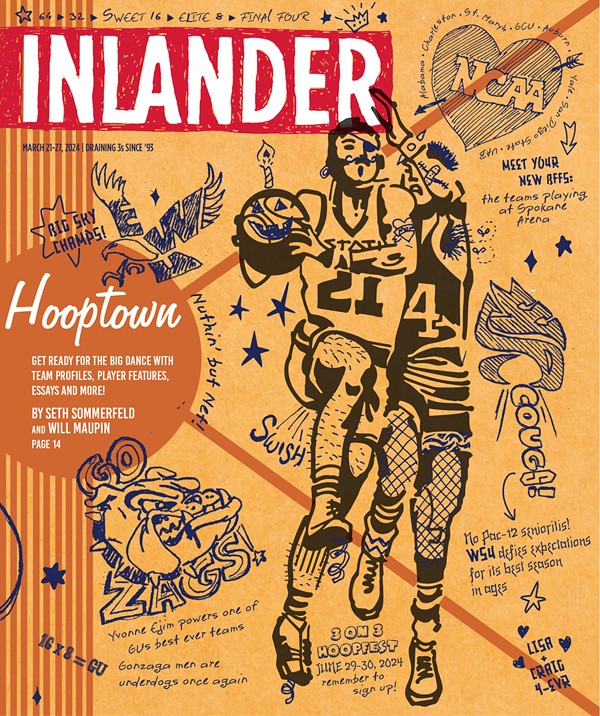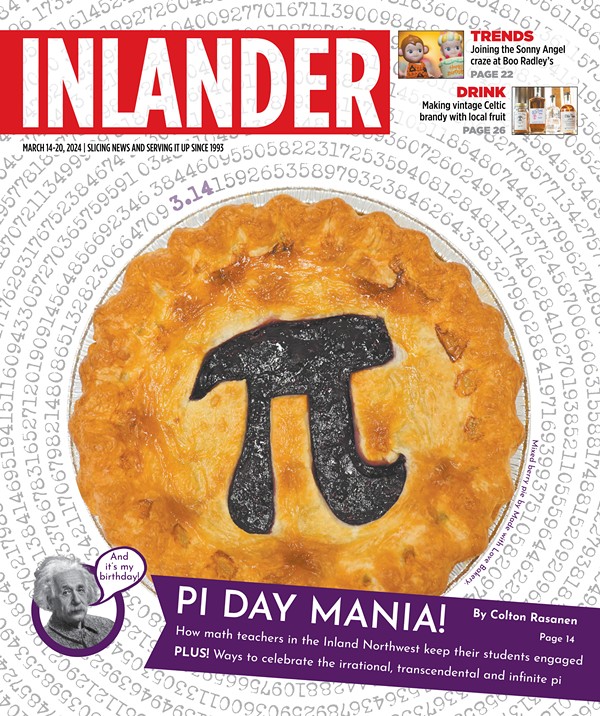The front door is locked by a remote. There’s a buzzer to the right of it — in the manner of some apartment buildings and all drug houses in the movies — that you have to ring to get inside. Pulling on the door handle, you are hit full in the face with a wall of heated air. Laden and moist, it blooms with the reek of boiling, fermenting grain. For a moment, you feel as though you are standing inside a loaf of freshly baked bread.
This is Dry Fly, the best craft distillery in America. So says the American Distilling Institute, which named Spokane’s only liquor manufacturer Distillery of the Year earlier this month.
It, by no means, is Dry Fly’s first award. At the San Francisco World Spirits Competition, in 2009, their vodka was named the best in the world. And last August, the people of Seattle — a group not prone to praising Spokane for anything — named Dry Fly the best local distiller in Seattle Weekly’s Best Of poll.
Indeed, the media has covered Dry Fly’s success story exhaustively.
No one, though, has ever really talked about the ways their myriad fans actually drink their Dry Fly.
I’ll take that one on, guys. I feel like celebrating.
At the Peacock Room, our server, Alicia,
says that, for the first time in a while now,
there is no shortage of Dry Fly’s wheat
whiskey.
Since it debuted in 2009, the first all-wheat whiskey distilled since Prohibition has proven scarce. Customers line up at the distillery and it sells out in hours. This is indicative of a national feeling, Dry Fly co-owner Don Poffenroth says. Whiskey people have been drinking the same four American brands since Prohibition, he says, and they’re thirsty for something new. “We’re a year or two from meeting demand for it.”
Hill’s was rumored to have a stash — and it did — but it was gone by the time we got there. After a few calls, we landed at the Peacock.
Alicia tells us that a lot of customers ask for Dry Fly by name. When it’s whiskey, they generally do it on the rocks or in Manhattans — a classic twist on the martini that pairs whiskey with sweet vermouth and a cherry. When people ask for gin and vodka, it’s generally in a standard martini.
Targeting customers who like to taste their alcohol, Poffenroth tells me, was vital to surviving as a micro distillery. Especially with vodka, a market bursting at the seams with massive distilleries churning out stomach-turning quantities of vodka artificially flavored with everything from lemon to bacon. “I can’t even play the yield game,” Poffenroth says, “but I can win the flavor game.”
This is true in at least one important case.
Bardessono is a luxury hotel in Napa Valley that is one of only three in the world green enough to earn a LEED-Platinum certification. They offer Dry Fly vodka as a sustainable alternative to mainstream brands.
“We did comparative tastings,” James Brownsmith, food and beverage manager at Bardessono, tells Sommelier Journal, “and it was clearly superior to everything else we tried. It’s also consistent with our emphasis on sustainability.”
Back at the Peacock, my friends and I try to order the way Alicia’s customers do, asking for a whiskey on the rocks, a dirty gin martini and a vodka pineapple. The whiskey opens up slowly, becoming sweeter and more caramelly as the ice melts.
Dry Fly’s gin is so delicate that it loses its pine tang under the oily weight of the olive juice. The main note that pokes through comes from Fuji apples farmed in Omak, Wash.
We all just kind of stare for a moment at the vodka glass, which looks to be 60 percent booze and 30 percent ice, with only a puck of pineapple juice ringing the bottom of the glass. These ratios would be withering with a lesser vodka, but here the rich vanilla in the Dry Fly makes a Creamsicle with the sparse fruit juice.
Dry Fly’s other owner, Kent Fleischmann,
says he and Poffy (this is his nickname
for Don) want Dry Fly to become
synonymous with a return to pre-Prohibition-era
cocktails. Simpler, more aromatic drinks are the
way trends are heading. This fits with Dry Fly’s
handcrafted, farm-to-still ethos.
“We want to place [our products] in places that get it,” Fleischy says. (This is Don’s nickname for him.)
More and more, artisan-minded barkeeps are making their own mixers the way Poffy and Fleischy make their liquor: from scratch.
I find one such cocktail at Far West, where bartender Corey Scanlan mixes handmade maraschino liqueur with Dry Fly’s gin and some lemon juice. He’s making an Aviation: a gray, cloudy drink that dates to 1916. It’s well-balanced — a little tart and a little piney — and mesmerizing to look at. The cherry at the bottom seems to glow though the haze of the drink, like wing lights through fog.
At the Yucca Tap Room in Tempe, Ariz., Dry Fly is the centerpiece of a drink that was invented in New Orleans in 1888.
Their Ramos Dry Fly Gin Fizz uses lemon and lime juice, orange flower water, agave nectar, milk, soda water and egg whites to create a slightly tart, slightly sweet drink that is simultaneously creamy and frothy.
I headed to Bon Bon to see if I could get one. Bartender Kelly Green had never heard of it, but she’s recently started working with egg whites. Green says people are often weirded out by the idea of egg in their drink at first, but it was a standard in many things back in the day.
“It just adds a really nice silkiness to the drink,” she says. Almost everyone who tries it, she says, becomes a convert.
I give her the Yucca Tap Room’s recipe and she whips it up. It’s creamy and effervescent, but too tart for her liking, so as I drink it, she makes up a second, substituting the agave for simple syrup. Green dips her straw in and tastes it. She likes this one much better. “It’s kinda like … what’s that place? Orange Julius.”
Well, Orange Julius with the faint pine astringency of juniper and the light burn of a mellow, well-balanced alcohol. It’s still fizzy, but her second try is creamier than the first, the greater sweetness of the simple syrup balancing the acidity of the citrus.
I am now on my third day of celebrating Dry Fly’s world-conquering booze and was planning to make it an early afternoon, but Green sucks me back in. “I’m going to tweak it one more time,” she says, reaching for the eggs. “Do you have a minute?”
Sure, I have a minute.




